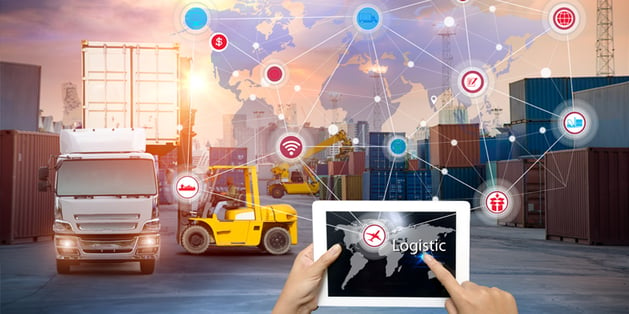
Artificial intelligence and the Internet of Things are making their initial forays into a myriad of warehouse operations. The expected outcome; DCs able to respond dynamically to current supply chain conditions instead of pre-set rules. Look for newfound flexibility and an ability to respond to specific customer demands. The general programming protocol is to minimize human intervention in daily supply chain operations. This should not be news to anyone involved in complicated supply chain systems.
We are at the point where AI and IoT are viable IT applications for the warehouse. Both are powerful new tools that better enable warehouse and distribution center activities to keep pace with rapidly shifting supply chain dynamics. Artificial intelligence systems can learn, over time, the patterns and trends that are most important. It can identify when specific events occur which require human intervention. It can sense security breaches and stop them before they become crises. Simply put, for the IoT to grow to its full potential, it needs the processing power of artificial intelligence.
Integration Into the Supply Chain
AI promises a brave new world of computers that can plan, strategize, evaluate options, calculate probabilities, and make smart decisions. The inter-connectivity and dual reliance of both systems is evident in the automotive applications currently being tested. Repetitive daily environments are best suited for early stage AI learning and IoT experiences at this stage in the application. An example is a typical commercial bus route. The travel route is planned and timed out as are the stops. IoT applications including sensors, video cameras and time keeping technology all gather data throughout the daily route. This data is the basis upon which AI evaluates and electronically digests the information. It is through the digestion process that AI basically learns the particular details of the route like staying on time, the average number of passengers per stop, and, in fact, the unpredictable events like traffic and weather delays. It is through this repetitive experience that AI will eventually be able to maximize the efficiency of the route by anticipating daily events along the route based upon historical data.
The same inference can be applied to a route for a commercial delivery unit whether it be a truck, plane, train or any other conveyance unit. In this example the desired result is the same. To maximize efficiency by learning the route and experiencing every possible condition which may affect it so contingency plans can be implemented in real time to maintain the integrity of the delivery. The benefit of this technology application will become evident once driver less technology is fully implemented.
Early Areas of Implementation
AI can significantly improve business operations by leveraging the tremendous amount of data generated by sensors monitoring the production and movement of products using IoT. The result is referred to as AIIOT, which is the merging of AI and IoT to manage inventory, logistics, and suppliers with a higher level of awareness and precision. The supply chain is one area that can benefit the most from streamlining since it has a direct influence on profitability and customer satisfaction.
There are already several implementations of AI and machine learning where supply chain efficiency is improved:
- Predictive Maintenance
By utilizing sensors to monitor operational conditions, technicians can be alerted in advance of potential equipment problems and service machines based on tear instead of scheduled service visits based on general manufacturers’ recommendations.
- Smarter Shipping
Algorithms are being used to manage last minute changes including selecting the best alternative port when the original port is blocked, estimating times-of-arrival, and even gauging the likelihood that a carrier will cancel a booking.
- Warehouse Management
AI has the ability to identify inventory and order patterns to reveal which items are selling and should be restocked first. Voice recognition can also be used for increasing product picking efficiency and accuracy by enabling a Warehouse Management System to tell workers through a headset which item to pick and where it’s located. In addition, when implementing IoT, every single component of a given product can be tracked from when it’s first manufactured to when it’s assembled and shipped to an end customer.
- Last Mile Delivery
The last mile is essential, and shipping companies are competing to have the most advanced and efficient delivery services. DHL is investing in intelligent robotic workers in its warehouses and air freight centers, semi-autonomous trucks that drive independently with minimal human intervention for the long haul and “follow-me” robots that can carry loads for delivery people in urban settings.
- Supplier Management
The data aggregated by tracking the supply chain is also important because it lets companies tailor their own production schedules, as well as pinpoint vendors that may be costing them unnecessary resources.


 Land-Link, a well respected professional organization, has been providing its clients with effective transportation and logistics solutions since 1978.
Land-Link, a well respected professional organization, has been providing its clients with effective transportation and logistics solutions since 1978.

